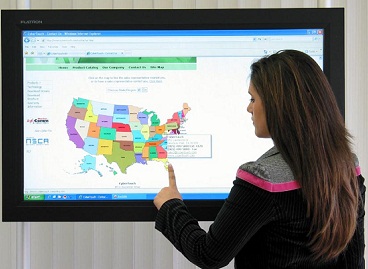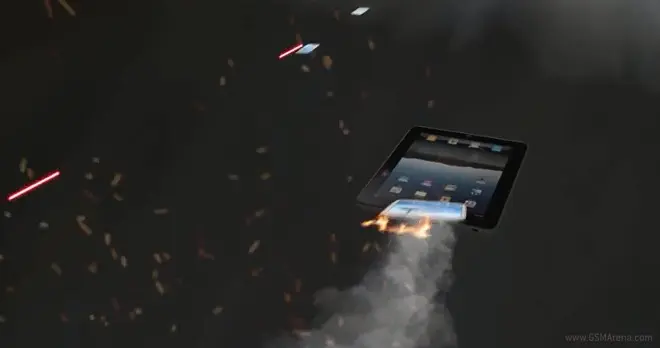
- #PANTALLAS RESISTIVAS MULTITOUCH FULL#
- #PANTALLAS RESISTIVAS MULTITOUCH PLUS#
- #PANTALLAS RESISTIVAS MULTITOUCH SERIES#
With this prototype, his students could compute in a few hours what otherwise had taken days to accomplish. That idea led to the first touch screen for a computer.

He, Parks, and Thurman Stewart, another doctoral student, used electrically conductive paper to read a pair of x- and y- coordinates. Sam thought of a way to solve that problem. To study atomic physics the research team used an overworked Van de Graff accelerator that was only available at night. The Berea College Magazine for alumni described it like this: Samuel Hurst developed resistive touchscreens almost accidentally. 1970s: Resistive touchscreens are inventedĪlthough capacitive touchscreens were designed first, they were eclipsed in the early years of touch by resistive touchscreens. Johnson's discovery was eventually adopted by air traffic controllers in the UK and remained in use until the late 1990s. Pressure sensitivity would arrive much later.Įven without the extra features, the early touch interface idea had some takers. The invention was also binary in its interpretation of touch-the interface registered contact or it didn't register contact. Johnson's initial technology could only process one touch at a time, and what we'd describe today as "multitouch" was still somewhat a ways away. The "conductive" part is usually a human finger, which makes for a fine electrical conductor. 1960s: The first touchscreenĪ capacitive touchscreen panel uses an insulator, like glass, that is coated with a transparent conductor such as indium tin oxide (ITO). But first, let's put finger to screen and travel to the 1960s.
#PANTALLAS RESISTIVAS MULTITOUCH SERIES#
Future entries in this series will study how the changes in touch displays led to essential devices for our lives today and where the technology might take us in the future.
#PANTALLAS RESISTIVAS MULTITOUCH PLUS#
Today, we'll look at when these technologies first arose and who introduced them, plus we'll discuss several other pioneers who played a big role in advancing touch. The first three decades of touch are important to reflect upon in order to really appreciate the multitouch technology we're so used to having today. This article is the first of a three-part series on touchscreen technology's journey to fact from fiction. But their inclusion in the series paralleled the advancements in the technology world, and by the late 1980s, touchscreens finally appeared to be realistic enough that consumers could actually employ the technology into their own homes. Popular science fiction television shows like Star Trek didn't even refer to the technology until Star Trek: The Next Generation debuted in 1987, almost two decades after touchscreen technology was even deemed possible. Although the underlying technology behind touchscreens can be traced back to the 1940s, there's plenty of evidence that suggests touchscreens weren't feasible until at least 1965. It took generations and several major technological advancements for touchscreens to achieve this kind of presence. Homes, cars, restaurants, stores, planes, wherever-they fill our lives in spaces public and private. These days, it's almost unfathomable how we once got through our daily tasks without a trusty tablet or smartphone nearby, but it doesn't stop there. It's hard to believe that just a few decades ago, touchscreen technology could only be found in science fiction books and film.
#PANTALLAS RESISTIVAS MULTITOUCH FULL#
Finger-free phones, full body gesturing, and our “touchscreen” future.La pantalla táctil capacitiva está diseñada para un dedo desnudo o varios dedos para detección multitáctil.

The capacitive touchscreen is designed for a bare finger, or multiple fingers for multi-touch sensing. Los paneles táctiles funcionan de varias formas, incluida la detección capacitiva y la pantalla táctil resistiva. Touchpads operate in one of several ways, including capacitive sensing and resistive touchscreen. Unlike a resistive touchscreen, some capacitive touchscreens cannot be used to detect a finger through electrically insulating material, such as gloves.Ī diferencia de una pantalla táctil resistiva, algunas pantallas táctiles capacitivas no se pueden utilizar para detectar un dedo a través de material aislante eléctrico, como guantes. Įl control se implementó a través de un joystick y botones en pantalla, utilizando la pantalla táctil capacitiva de los dispositivos basados en iOS. Control was implemented via an on-screen joystick and buttons, utilizing the iOS-based devices' capacitive touchscreen.


 0 kommentar(er)
0 kommentar(er)
